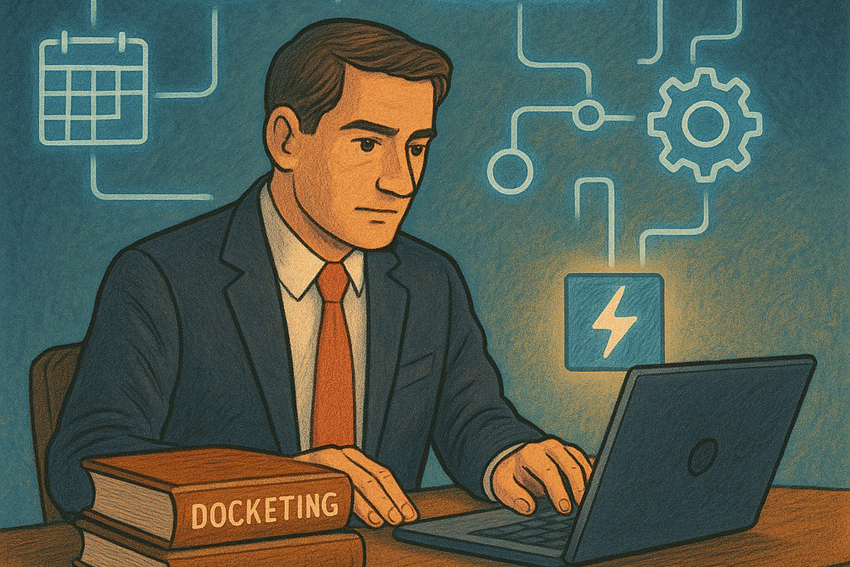Cybersecurity: Use AI to manage eDiscovery data in diverse locations, formats
Cybersecurity: Use AI to manage eDiscovery data in diverse locations, formats
By Carl Mazzanti
The increasing adoption of cloud services, mobile devices, social media, and the Internet of Things has placed substantial demands on eDiscovery systems. Cybersecurity professionals, though, can help legal teams use artificial intelligence (AI) to efficiently address eDiscovery challenges and opportunities.
When data is generated and stored in numerous locations and formats, it can be difficult to find and manage — and remote work models add complexity to the process, increasing the risk of data loss due to the use of personal devices and insecure networks. To address these challenges, forward-looking firms are taking a proactive and holistic approach to information governance by implementing policies and procedures to track and secure data throughout its lifecycle. Efficiently classifying and monitoring sensitive information at scale, however, as well as enforcing security and privacy policies, requires automation. By extracting, analyzing, and applying information from large data sets, AI tools can provide new insights, systematize processes, speed time to resolution, and reduce costs.
AI has become essential to automating and optimizing such information governance tasks as data classification and policy enforcement. AI can also help legal teams improve the accuracy and efficiency of eDiscovery outcomes by automating data deduplication, redaction, document review, and predictive coding. Uses can also include automating such tasks, for example, as checking whether all documents containing attorney-client privileged material have been identified and redacted in the same way.
AI also enables advanced capabilities like sentiment analysis and topic modeling. These capabilities help legal teams to understand the context and meaning of data, as well as identifying relevant facts and patterns.
Using AI in e-discovery can help cut costs — some estimates note that simply presenting documents in conceptual clusters can yield a 15 percent to 20 percent increase in review speed — but AI can also add risk to information governance and eDiscovery processes. For example, when AI algorithms have been trained using poor quality or insufficient data, biased or inaccurate results may be generated, which may affect the reliability and admissibility of evidence. Therefore, when an AI algorithm identifies data that may be relevant to a matter, experts should still review it to determine whether the documents are indeed relevant, and to identify the documents that are of the greatest importance. Further, clear protocols and standards for the use and disclosure of AI in discovery will prove essential.
Greater scalability
Cloud-based solutions dominate the eDiscovery technology landscape because they offer lower costs, greater scalability, and faster deployment. Cloud-based solutions also deliver vastly improved accessibility for teams spread across distance. Consequently, experts predict that legal adoption of cloud-based technology will continue to grow rapidly.
Cloud computing allows organizations to store, process, and access large amounts of electronically stored information from anywhere. This improves collaboration, saves time, and promotes data security by allowing responders to perform an initial data review in place.
An emerging technology, blockchain, has the power to play an increasingly useful role in enhancing eDiscovery. Recording transactions in a secure, transparent, and immutable way promises significant eDiscovery benefits, including:
- verifying the authenticity and provenance of electronically stored information
- tracking data ownership, custody, and transfer
- reducing the risk of data breaches by strengthening access control and encryption
- promoting efficiency and accuracy by enabling smart contracts and automating tasks such as data collection, preservation, and review
- enforcing compliance with such regulations as data retention policies
Proactive legal teams will keep a close eye on developments in blockchain technology, as this may have a substantial impact on eDiscovery.
Navigating these and other eDiscovery challenges and opportunities requires an approach that harnesses technology while instituting best practices in information governance. Highly trained cybersecurity service providers work with firms to implement solutions for eDiscovery and information governance, helping to reduce costs while simplifying processes and producing consistent, defensible results.
![]() Carl Mazzanti is president of eMazzanti Technologies, a cyber security and IT support organization based in Hoboken, NJ. The company can be reached at [email protected].
Carl Mazzanti is president of eMazzanti Technologies, a cyber security and IT support organization based in Hoboken, NJ. The company can be reached at [email protected].
Share this story, choose a platform
Brought to you by BridgeTower Media
Free Weekly Newsletter
Recommended content
The Small Practitioner: Re-thinking docketing technology as critical law firm infrastructure
The Small Practitioner: Re-thinking docketing technology as critical law firm infrastructure By Dominick Esposito For law firms, legal operations teams, and [...]
What a grade school game taught me about legal innovation
How a 5th grade brain can outthink artificial intelligence and provide better insights into solving grown-up professional problems. Read more [...]
The art of the attorney exit email
While there are no hard-and-fast rules, it is best not to burn bridges and to keep future lines of communications [...]
How much should an associate attorney be paid?
Law firms often seen to go to extremes and pay too much or too little. Both approaches can cause problems. [...]






